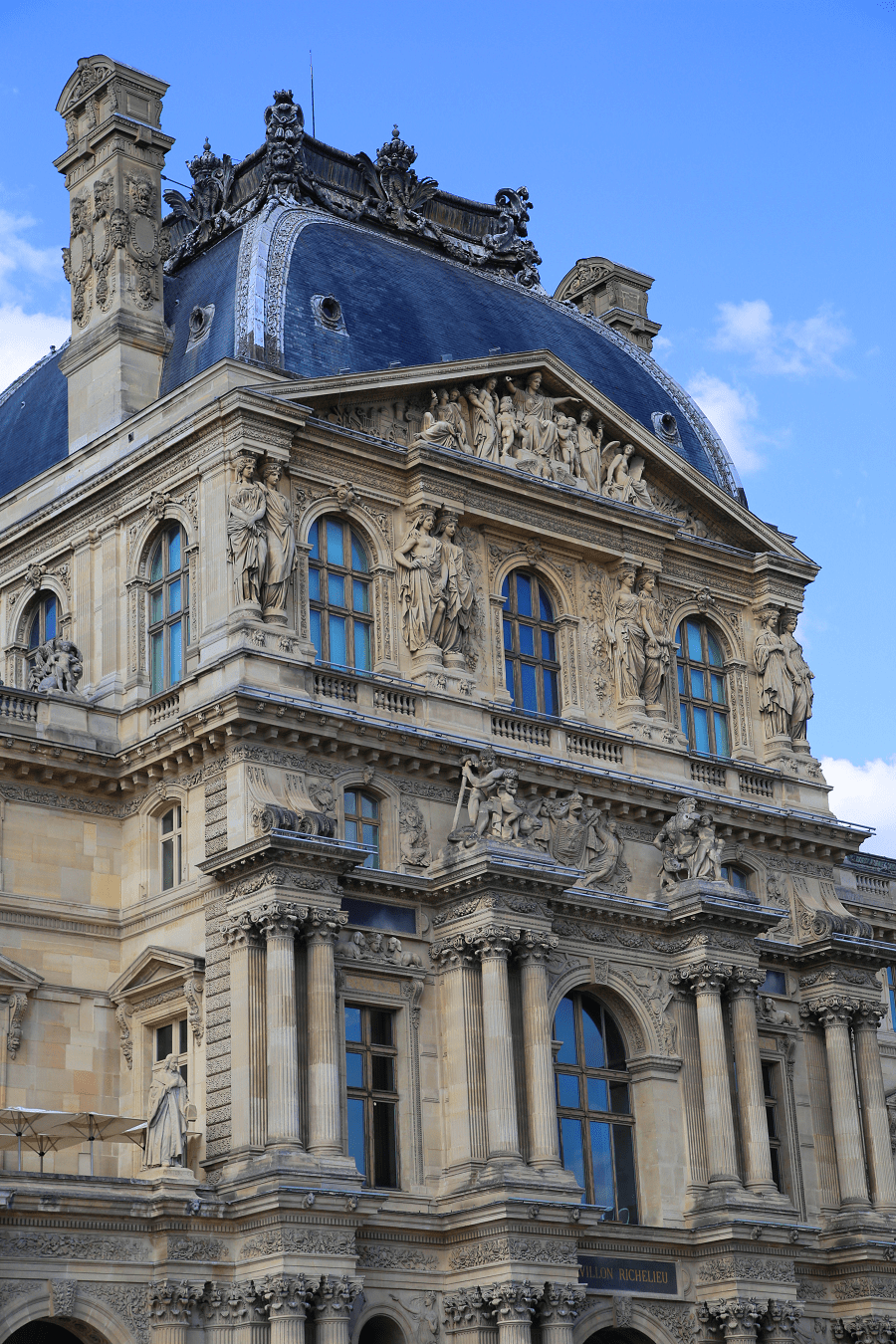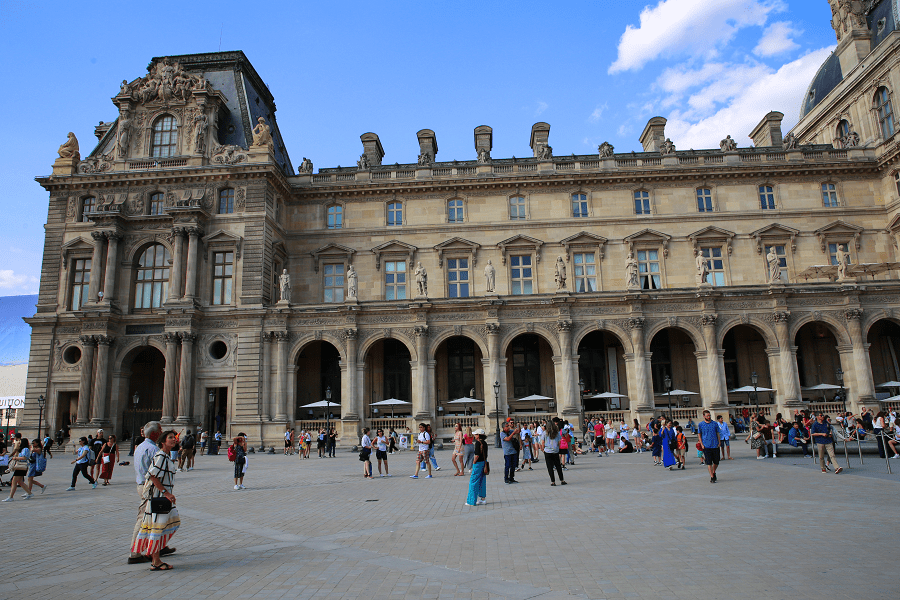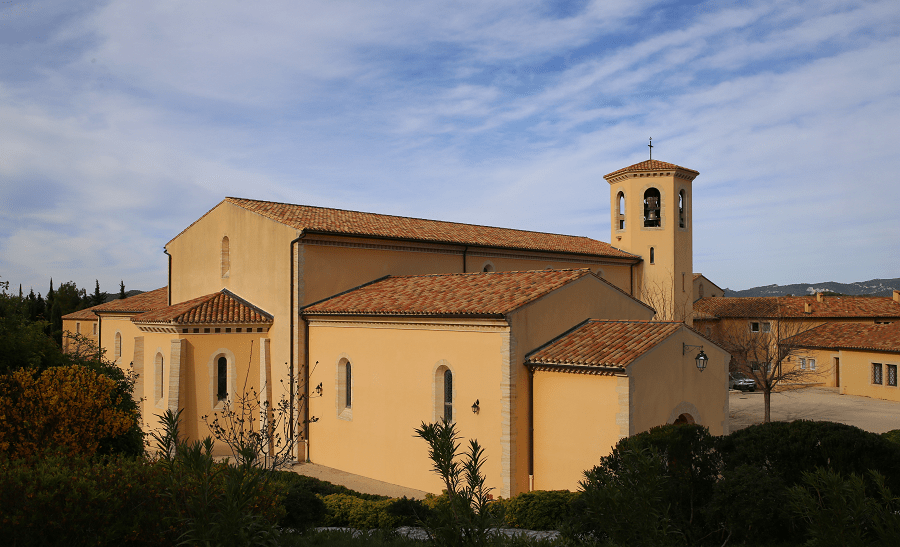The Louvre Palace is a former royal palace located in the 1st arrondissement of Paris (France) on the right bank of the Seine, between the Tuileries garden and the Saint-Germain-l’Auxerrois church. It now houses the Louvre Museum.
The construction of the Louvre is inseparable from the history of Paris. It spans more than 800 years, although the general plan of the palace was only imagined during the Renaissance. Charles V established his residence there, giving the palace the status of the largest royal residence, preserved until the reign of Louis XIV and the Palace of Versailles.
With 7.8 million visitors in 2022 – a quarter of them French – it is the most visited museum in the world and the most visited cultural site in France, ahead of the Eiffel Tower, with Notre-Dame de Paris Cathedral being in head of monuments with free access with 13.6 million visitors estimated.
The Louvre Pyramid is a large glass-and-metal structure designed by the Chinese-American architect I. M. Pei. The pyramid is in the main courtyard (Cour Napoléon) of the Louvre Palace in Paris, surrounded by three smaller pyramids. The large pyramid serves as the main entrance to the Louvre Museum. Completed in 1988 as part of the broader Grand Louvre project, it has become a landmark of Paris.
History
Originally a defensive castle, it has served numerous government-related functions in the past, including intermittently as a royal residence between the 14th and 18th centuries. It is now mostly used by the Louvre Museum, which first opened there in 1793.
Whereas the area had been inhabited for thousands of years, the Louvre’s history starts around 1190 with its first construction as a castle defending the western front of the Wall of Philip II Augustus. The Louvre’s oldest section still standing above ground, its Lescot Wing, dates from the late 1540s, when Francis I started the replacement of the medieval castle with a new design inspired by classical antiquity and Italian Renaissance architecture. Most parts of the current building were constructed in the 17th and 19th centuries.
For more than three centuries, the history of the Louvre has been closely intertwined with that of the Tuileries Palace, created to the west of the Louvre by Catherine de’ Medici in 1564 and finally demolished in 1883. The Tuileries was the main seat of French executive power during the last third of that period, from the return of Louis XVI and his court from Versailles in October 1789 until the palace was set on fire during the Paris Commune of 1871.
The Pavillon de Flore and Pavillon de Marsan, which used to respectively mark the southern and northern ends of the Tuileries, are now considered part of the Louvre Palace. The Carrousel Garden, first created in the late 19th century in what used to be the great courtyard of the Tuileries (or Cour du Carrousel), is now considered part of the Tuileries Garden. A less high-profile but historically significant dependency of the Louvre was to its immediate east, the Hôtel du Petit-Bourbon, appropriated by the monarchy following the betrayal of the Constable of Bourbon in 1523 and mostly demolished in October 1660 to give way to the Louvre’s expansion. The last remains of the Petit-Bourbon were cleared in the 1760s.
Museum
The Louvre finally became a public museum during the French Revolution. In May 1791, the National Constituent Assembly declared that the Louvre would be “a place for bringing together monuments of all the sciences and arts”.
The Musée du Louvre owns 615,797 objects of which 482,943 are accessible online since 24 March 2021 and displays 35,000 works of art in eight curatorial departments.
Departments
Egyptian antiquities, comprising over 50,000 pieces, includes artifacts from the Nile civilizations which date from 4,000 BC to the 4th century AD. The collection, among the world’s largest, overviews Egyptian life spanning Ancient Egypt, the Middle Kingdom, the New Kingdom, Coptic art, and the Roman, Ptolemaic, and Byzantine periods.
Near Eastern antiquities, the second newest department, dates from 1881 and presents an overview of early Near Eastern civilization and “first settlements”, before the arrival of Islam. The department is divided into three geographic areas: the Levant, Mesopotamia (Iraq), and Persia (Iran). The collection’s development corresponds to archaeological work such as Paul-Émile Botta’s 1843 expedition to Khorsabad and the discovery of Sargon II’s palace. These finds formed the basis of the Assyrian museum, the precursor to today’s department.
The Greek, Etruscan, and Roman department displays pieces from the Mediterranean Basin dating from the Neolithic to the 6th century. The collection spans from the Cycladic period to the decline of the Roman Empire. This department is one of the museum’s oldest, and contains works acquired by Francis I. Initially, the collection focused on marble sculptures, such as the Venus de Milo.
The Islamic art collection, the museum’s newest, spans “thirteen centuries and three continents”. These exhibits, of ceramics, glass, metalware, wood, ivory, carpet, textiles, and miniatures, include more than 5,000 works and 1,000 shards. Originally part of the decorative arts department, the holdings became separate in 2003. Among the works are the Pyxide d’al-Mughira, a 10th century ivory box from Andalusia (Spain); the Baptistery of Saint-Louis, an engraved brass basin from the 13th or 14th century Mamluk period; and the 10th century Shroud of Saint-Josse from Iran.
The sculpture department consists of works created before 1850 not belonging in the Etruscan, Greek, and Roman department. The Louvre has been a repository of sculpted material since its time as a palace; however, only ancient architecture was displayed until 1824, except for Michelangelo’s Dying Slave and Rebellious Slave. Initially the collection included only 100 pieces, the rest of the royal sculpture collection being at Versailles.
The Objets d’art department spans the time from the Middle Ages to the mid-19th century. The department began as a subset of the sculpture department, based on royal property and the transfer of work from the Basilique Saint-Denis, the burial ground of French monarchs that held the Coronation Sword of the Kings of France.
The painting department has more than 7,500 works from the 13th century to 1848 and is managed by 12 curators who oversee the collection’s display. Nearly two-thirds are by French artists, and more than 1,200 are Northern European. The Italian paintings compose most of the remnants of Francis I and Louis XIV’s collections, others are unreturned artwork from the Napoleon era, and some were bought.
The prints and drawings department encompasses works on paper. The origins of the collection were the 8,600 works in the Royal Collection (Cabinet du Roi), which were increased via state appropriation, purchases such as the 1,200 works from Fillipo Baldinucci’s collection in 1806, and donations.
Address: 75001 Paris, France.
The two nearest Paris Métro stations are Louvre-Rivoli and Palais Royal-Musée du Louvre, the latter having a direct underground access to the Carrousel du Louvre commercial mall.
Working days
Thursday 9 AM–6 PM
Friday 9 AM–9:45 PM
Saturday 9 AM–6 PM
Sunday 9 AM–6 PM
Monday 9 AM–6 PM
Tuesday Closed
Wednesday 9 AM–6 PM
Phone: +33 1 40 20 53 17
Founded: August 10, 1793
Architects: Louis Le Vau, Claude Perrault, Pierre Lescot
Date completed: 1793
Visitors: 7.8 million (2022): Ranked 1st nationally; Ranked 1st globally in 2022
Director: Laurence des Cars
Subsidiary: Louvre Conservation Center
The prices start from 17 euro.
See more:



























